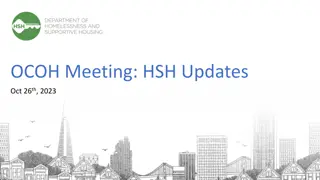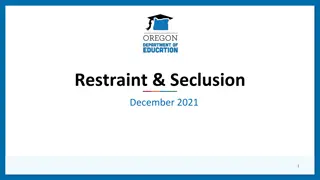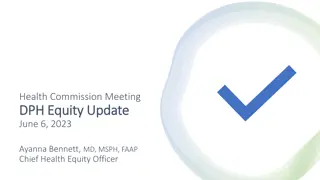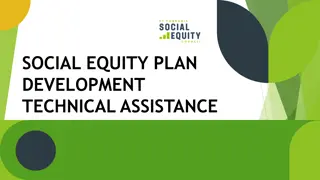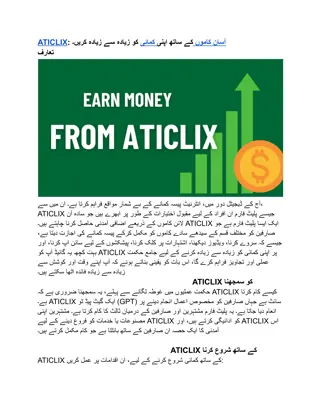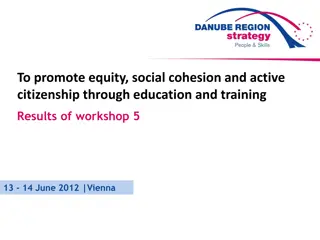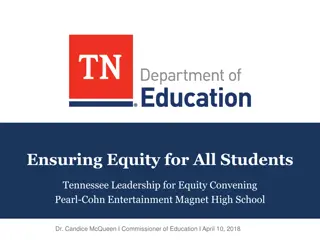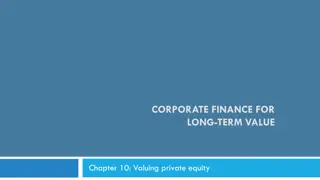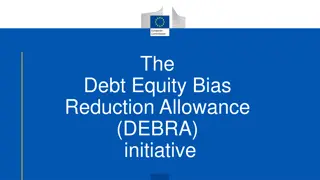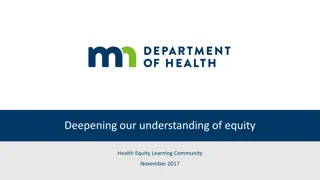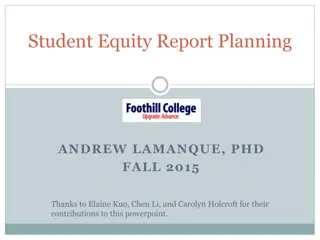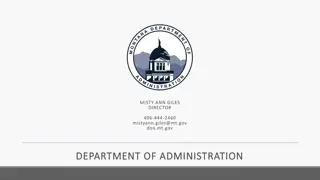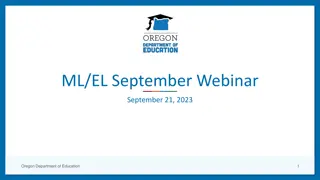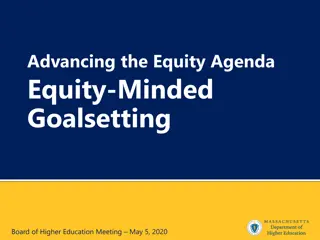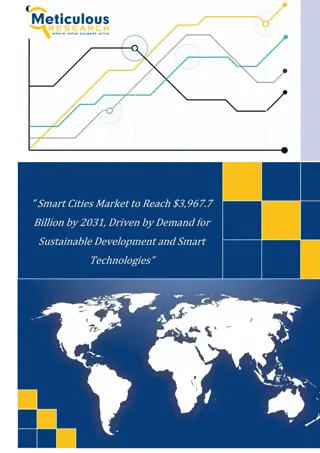Equity in Education Conference: Pulling Together for Smart Learning
Join Susan Close & Patricia Pain at the Greater Victoria School District 61 for the "Equity in Education Conference" on October 23, 2020. Dive into discussions around Smart Learning, achieving equity, and empowering all learners. Explore keynotes, reflections, and activities to transform education and drive positive change.
Download Presentation

Please find below an Image/Link to download the presentation.
The content on the website is provided AS IS for your information and personal use only. It may not be sold, licensed, or shared on other websites without obtaining consent from the author. Download presentation by click this link. If you encounter any issues during the download, it is possible that the publisher has removed the file from their server.
E N D
Presentation Transcript
You Have a Very Smart Brain! Presented by Susan Close & Patricia Pain 10:30-12 Pulling Together: Equity in Education Conference Greater Victoria School District 61 October 23, 2020
Land Acknowledgement Musqueam Kwikwetlem First Nation
Chat Blast! Chat Blast! Type a response in Type a response in the the chat to each of chat to each of these these questions, questions, but but don't don't hit enter until I say until I say go. Who are you? Who are you? Where are you from? Where are you from? hit enter go. What is your role? What is your role? We will We will hit enter hit enter at at the same time the same time and and blast the chat blast the chat with with our responses! our responses! One word to describe One word to describe how how you are feeling you are feeling today... today...
Who are we? Who are we? Susan Close Susan Close Patricia Pain Patricia Pain
Keynote: Keynote: K K Denise Augustine What struck y? What struck you? Type in your thoughts
Shape of the session Connecting Reflecting on the keynote theme Task for the session: How does SmartLearning achieve equity? Your goals Hard questions SmartLearning overview, drivers & findings Processing Lesson sequence: You have a very smart brain Reflecting on the learning: What did you notice? Transforming Explain how SmartLearning achieves equity. Reflecting Find evidence of meeting your goals Strengths you saw in the learning Next steps
Your goals for the session Type them into the chat box
A very hard question: How does a learning situation release the full mental resources of all learners and help them learn and retain complex skills? (Langer, 1997) This Photo by Unknown Author is licensed under CC BY
How do we harness collective intelligence? While at any given moment our working memory remains small, quota for the total data we can pull through that narrow width becomes huge. This collective intelligence, the sum total of what everyone in a distributed group can contribute, promises maximal focus, the summation of what multiple eyes can notice (Goleman, 2013).
an inclusive, concept-based, learning-centred, and interactive approach to learning designed to develop agency alongside skills and competencies for deeper learning - in learners of all ages .
Think for a moment What does deeper learning mean to you? This Photo by Unknown Author is licensed under CC BY-NC-ND
Students focus on the meaning of what they are learning, aim to develop their own understanding, relate ideas together and make connections with previous experiences, ask questions about what they are learning,discuss their ideas with others and compare different perspectives (Hattie & Donoghue, 2016).
Questions we ask: Is what we re doing giving us what we want? How do we know?
Excerpt from the A S K-6to9 Skills & Competencies Continuum Literal and concrete summary with direct or obvious connections to text or own experiences. Includes first... next... finally for some aspects of the text (See ASK-3-5) A generally accurate summary with clear, logical connections to text, own ideas and/or other selections, and supported with reasons and/or examples. Includes problem, issue, solution for entire text. A thoughtful synthesis, integrating text, own ideas and/or other selections, and supported with reasons/example/details. A complex and evocative synthesis, integrating author s and own knowledge; makes insightful, often subtle points among text, own ideas and/or other selections. Interpreting Big Idea, Message or Theme summarizing and synthesizing Relates the most obvious and concrete aspects of the selection to the reading or viewing experiences. Generally accurate analysis and interpretation of theme/ideas, includes some inferences. Analysis and interpretations of theme/ideas/elements show complexity; reveals deeper meaning; makes thoughtful inferences. Specific and insightful analysis and interpretations of text, with connections to own ideas, other selections, or wider world. analyzing, interpreting Offers reactions with logical interpretations or obvious themes/ideas with minimal justification. A general obvious conclusion. Insightful, satisfying and often complex conclusions. drawing conclusions Logical conclusions. Solid, clear conclusions.
SmartLearning 2020 Deeper Learning Deeper Learning Building beliefs - agency Setting s-t-r-e-t-c-h goals Engaging in cognitive processes - SmartLearning tools - designed to develop competencies for deeper learning Reflecting to find evidence of meeting goals; noticing strengths This Photo by Unknown Author is licensed under CC BY-NC
Then what does? End-tasks: Open-ended: Explain what the author wants you to understand; justify your thinking with evidence from the text. Lesson task: Think from a perspective to capture what is important Startling finding! Teaching comprehension skills in isolation leads to no significant gains (Oakhill, 2019). Integrating skills with a purpose or task in mind
Important findings: Taking on the perspective & feelings of others is one of the most profound contributors to deep reading. Empathy involves a whole feeling-thinking network that connects vision, language, and cognition with extensive subcortical networks (Wolf, 2018.) Developing imagery while reading -- followed by drawing & generating a keyword gist-- allows the student to recall the imagery and helps the student express thinking with language reading comprehension improved by 50% (OECD, 2010; Bell, 2015).
Festina lente: hasten slowly Slowing down to go deeper inspired an acceleration of skills and achievement.
Building community & Purpose partners sitting side-to-side, distanced, or walk-to-talk Structured A/B partner-talk I generate some thinking. I explain and clarify my thinking as I m talking. I listen to notice similarities and differences, or to coach We share our collective thinking. Hearing others thinking refines and extends my thinking. High challenge; low risk ___ and I think ___. We think this because ___.
Brain Bruising Brain Bruising Social pain Social pain such that resulting from exclusion activates the same brain regions as physical pain... To the brain, social social rejection rejection is so meaningful that it hurts literally. (Eagleman, 2016)
A Lesson sequence: A Lesson sequence: You have a very smart brain This Photo by Unknown Author is licensed under CC BY-ND
A lesson sequence: You have a very smart brain Designed to guide learners to understand more about how their brains process information as they learn SmartLearning routines, practices and processes End task for the sequence: Thinking like a neuroscientist, explain what you want people to know about the brain and learning?
Tasks: What does a neuroscientist want you to know about the brain and learning? TEXT: Novel: the adventures of a coyote Lesson 1 Task: Think like the mother coyote and write to send an image of what is important and how you are feeling about life at this moment in time. Notice what makes a powerful image or picture in your brain. This Photo by Unknown Author is licensed under CC BY-SA-NC
Tasks: What does a neuroscientist want you to know about the brain and learning? TEXT: a Read-aloud Nell, the adventures of a coyote What are these tasks asking you to do? Lesson 1 Task: Think like the mother coyote and write to send an image of what is important and how you are feeling about life at this moment in time. Notice your thinking
Neuro-plastic change occurs when a person pays close attention noticing the smallest sensory distinctions builds brain maps activating & strengthening networks of neurons
Goal: capture what is important S-t-r-e-t-c-h goal: Notice what makes a powerful picture or image in your thinking
Activating prior knowledge & building background information Tool: Gap Analysis Notice images in your thinking: Green shoots pushed through faded grass
Notice images in your thinking: Green shoots pushed through faded grass Stones in the furrows
Green shoots pushed through faded grass Stones in the furrows Babies the size of a small squirrel blind
Green shoots pushed through faded grass Stones in the furrows Babies the size of a small squirrel blind Soft scuffling at the at the entrance to the den
Green shoots pushed through faded grass Stones in the furrows Babies the size of a small squirrel... blind Soft scuffling at the at the entrance to the den Bordering an overgrown field
Green shoots pushed through faded grass Stones in the furrows Babies the size of a small squirrel blind Soft scuffling at the at the entrance to the den Bordering an overgrown field Digging furiously with her forepaws
B: partner-talk What do you know? A A B: What don t you know? partner-talk
___ and I predict the mother coyote s life will be ___ . We think this because ___. A a prediction for what life will be like for the mother coyote B: generate
Noticing about the brain and learning What are you noticing about your thinking?
Questions: Wondering Tool: POPCORN pop up to ask a question
Setting a goal Task: Think like the mother coyote to send an image of what life is like. Choose two icons for focus on that will best help you achieve your goal.
Processing:Listening (viewing reading) with a task and goal in mind Tool: Idea-sketch tagline See yourself as the mother coyote as I read a section of the story to you notice images coming into your thinking
After listening and noticing thinking Idea-sketchas the mother coyote to send an image that shows what is important and how you are feeling about life Creating a visual that captures important ideas gives your brain a space to develop and refine your thinking. Observing and hearing other s ideas extends your thinking.
Detective- walk to notice powerful images This Photo by Unknown Author is licensed under CC BY
Image Analysis: Partner Picture-talk A: sends the sketched image I m picturing B: listens, then coaches You could say more about (looks at picture) I noticed I pictured (looks at the coaching card strip and the picture) I noticed I could picture more about
Transforming: Task: write as the coyote mother to send an image of what life is like for you and how you are feeling about it. Tool: Task analysis Tool: Set the image
Reflecting 1. Put a check on evidence you met your goal 2. What strengths did you notice in your learning? 3. A B: new ideas about coyotes, new connections, questions in your thinking 4. What makes a powerful image in your thinking: ZIPPER Insight into one s thoughts, or metacognition, is key to high achievement (Fleming, 2014) ZIPPER:to hear ideas introduce kinesthetic actions
My homework: Find powerful images in the students work in the Idea-sketches, the Taglines and the writing. Connecting for the next day: Use examples to build a T-chart for what makes a powerful image Quality on the left Example on the right Learners use the criteria to set stretch goals Identify icons to focus on to help them reach goals.
Think for a moment Think for a moment Is what we re doing giving us what we want? How do we know?
Is what we are doing giving us what we want? Reflecting... (With support*) refers to class generated criteria and/or stretch goal/s to identify some evidence of meeting goal. Refers to class generated criteria and stretch goal to identify some specific evidence of meeting a stretch goal. Refers to class generated criteria and stretch goal to identify detailed evidence of meeting a stretch goal for reading and responding. Refers to class generated criteria and stretch goal to identify significant or insightful evidence of meeting a personal stretch goal for reading and responding. on Reading/Viewing & With prompting*, identifies some evidence of strength in reading and responding. Uses class generated criteria and some self-knowledge to identify strengths in reading and responding. Uses class generated criteria and self-knowledge to identify detailed evidence of personal strengths in reading. Uses class generated criteria and well-considered self- knowledge to identify significant personal strengths in reading. Responding May attempt to identify and explain a plan for achieving the goal/s. Identifies a new s-t-r-e-t-c-h goal for reading and responding, with a limited explanation of why the goal is appropriate. Identifies a relevant new s-t-r-e-t-c-h goal for reading and explains with some detail why the goal is personally appropriate. Identifies a well-considered new goal. Explains why the s-t-r-e-t-c-h goal is personally appropriate, with a deeply insightful reflective statement.





